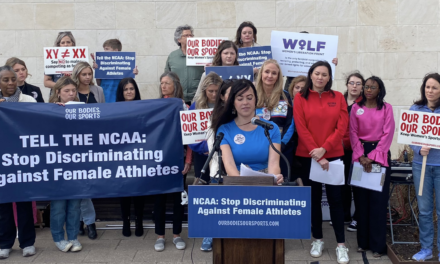The Florida Board of Education released revised standards for the state’s K-12 African American History curriculum last week, prompting outrage across the nation. But critics don’t seem to have a problem with the whole 21-page document—just a select few lines. Here is an in-depth look at passages causing the controversy, what people are saying and what you won’t hear from the media:
(SS.68.AA.2.3) “Examine the various duties and trades performed by slaves (e.g., agricultural work, painting, carpentry, tailoring, domestic service, blacksmithing, transportation).”
Benchmark Clarification 1: “Instruction includes how slaves developed skills which, in some instances, could be applied for their personal benefit.”
(SS.912.AA.2.8) “Examine the range and variety of specialized roles performed by slaves.”
Benchmark Clarification 1: “Instruction includes the trades of slaves (e.g. musicians, healers, blacksmiths, carpenters, shoemakers, weavers, tailors, sawyers, hostlers, silversmiths, wheelwrights, wigmakers, milliners, painters, coopers).”
Most of the criticism leveled at the standards references Benchmark Clarification 1 of SS.68.AA.2.3. Some critics argue this amounts to, “teaching middle schoolers that enslaved people benefited from slavery.” In a recent opinion piece, Washington Post columnist Eugene Robinson expounds on this point, arguing slaves couldn’t benefit from their skills because their labor belonged to their oppressors.
Robinson further criticizes Benchmark Clarification 1 of SS.912.AA.2.8, part of the high-school curriculum, for exaggerating the number of trades most slaves could learn. “…The vast majority of African Americans were forced to do backbreaking work as field hands,” Robinson writes, “Very small numbers were employed otherwise.”
Some members of the African American History Standards Workgroup, a group of qualified volunteers who spent three months reviewing Florida’s curriculum standards before their implementation, have spoken in its defense. Professor Emeritus of Political Science at Michigan State University and former Chairman of the United States Commission on Civil Rights Dr. William B. Allen and award-winning producer and screen writer Dr. Frances Presley Rice released a joint statement last week defending the benchmark’s accuracy and emphasizing that its language acknowledges slaves that had the opportunity to use their skills but does not claim that all — or even most — did.
“It is disappointing, but nevertheless unsurprising, that critics would reduce months of work to create Florida’s first ever stand-alone strand of African American History Standards to a few isolated expressions without context,” the statement concludes.
In later interviews with Fox and NPR, Allen referenced significant historical examples like Frederick Douglass, who learned to read from his then-owner’s mistress. Douglass later used that skill to the benefit of himself and his country, Allen claims.
Others have noted the similarity between the curriculum’s language to Unit 2 of the College Board’s lauded AP African American Studies curriculum which states that enslaved people learned “specialized trades” like painting, carpentry, music and medicine. “Once free,” the course says, “African Americans used these skills to provide for themselves and others.” College Board went so far as to claim the skills slaves learned while enslaved helped them even when they weren’t free, telling CNN, “Enslaved Africans and their descendants used those skills to survive, build community and create culture in resistance to their oppression.”
Another section from the new standards for the high school curriculum raises questions about the importance of word choice and context:
(SS.912.AA.3.6) “Describe the emergence, growth, destruction and rebuilding of black communities during reconstruction and beyond.”
Benchmark Clarification 1: “Instruction includes the ramifications of prejudice, racism and stereotyping on individual freedoms (e.g., the Civil Rights Cases, Black Codes, Jim Crow Laws, lynchings, Columbian Exposition of 1893).
Benchmark Clarification 2: “Instruction includes acts of violence perpetrated against and by African Americans but is not limited to 1906 Atlanta Race Riot, 1919 Washington, D.C. Race Riot, 1920 Ocoee Masaccre, 1921 Tulsa Massacre and the 1923 Rosewood Massacre.”
Critics contend the use of “against and by” in Benchmark Clarification 2 unfairly blames innocent African Americans for defending themselves against oppression. A CNN article written after the new standards were released specifically links the phrase “acts of violence perpetrated against and by African Americans” with the listed massacres. It does not mention the explicit inclusion of two race riots.
The connotations of these words are significantly different. The word “riot” usually evokes images of reciprocal or chaotic violence, while “massacre” usually denotes bodily harm perpetrated against an innocent party. Semantics aside, the benchmark does not describe specific instances of violence beyond mentioning their names and doesn’t limit conversations only to violence between white and black people. It’s left up to teachers to introduce violence within racial groups and, if appropriate, discuss which party is at fault in a given event.
Note also that, while Benchmark Clarification 2 invites conversation about violence committed by all racial groups, Benchmark Clarification 1 focuses solely on the significant injustice and injury African Americans faced from legal and social remnants of slavery.
This section on slavery prior to 1619 is also ruffling feathers:
(SS.912.AA.1.2) “Examine the condition of slavery as it existed in Africa, Asia, the Americas and Europe prior to 1619.”
Benchmark Clarification 1: “Instruction includes how trading in slaves developed in African lands (e.g., Benin, Dahomey).”
Benchmark Clarification 2: “Instruction includes the practice of the Barbary Pirates in kidnapping Europeans and selling them into slavery in Muslim countries (i.e., Muslim slave markets in North Africa, West Africa, Swahili Coast, Horn of Africa, Arabian Peninsula, Indian Ocean slave trade).”
Benchmark Clarification 3: “Instruction includes how slavery was utilized in Asian cultures (e.g., Sumerian law code, Indian caste system).”
Benchmark Clarification 4: “Instruction includes the similarities between serfdom and slavery and emergence of the term “slave” in the experience of Slavs.”
Benchmark Clarification 5: “Instruction includes how slavery among indigenous peoples of the Americas was utilized prior to and after European colonization.”
Critics like Robinson take issue with sections like the one above, which is part of a unit that tasks classes with “examining the causes, courses and consequences of the slave trade in the colonies from 1609 to 1776.” Robinson responds, “In other words, I guess, ‘Black people started it’ and ‘White people were slaves, too.’”
Here, critics are inferring the intent of the Florida Board of Education — and likely, by extension, Florida’s government — which can’t be known. However, none of the section’s language connotates blame or indicates that slavery originated in Africa. Further, the Benchmark Clarification 4 of the subsequent section (SS.912.A.A.1.2) explicitly states, “Instruction includes the shift in attitude toward Africans as Colonial America transitioned from indentured servitude to race-based, hereditary slavery.” This passage clearly differentiates the slavery African Americans experienced in America from the kinds of slavery that had occurred historically and globally.
Past these few lines, the curriculum seems to have passed muster with the public. It requires children of all levels to identify African Americans that contributed to exploration and western expansion, technology, science, art, politics, community service, military service, religion, education and athletics. Several sections examine the ravages of slavery, including a section devoted to the Triangular Trade and conditions of undernourishment, poor nutrition, hard labor, disease and infant mortality on British American and Caribbean plantations. It intentionally differentiates the experiences of African American women and men, and the different approaches African American leaders like Nat Turner, John Brown and Frederick Douglass took to ending slavery. It also asks teachers and students to explore the ways American values like equality and liberty contributed to abolition.
With issues as important and formative as educational policy, it’s important for parents to form opinions outside of what’s articulated on the news or spread by word of mouth. As controversy continues to swirl and new states’ look at implementing education reforms and revisions like Florida’s, consider reading the standards yourself and pondering the following questions:
1. Do these standards reflect what I know of history?
2. Would I be comfortable if my children were taught this way?
3. Does it gloss over the injustices in America’s past?
4 Is America portrayed honestly?
5. What people would gain if these standards were implemented? What if it weren’t?
Most importantly, pray for Jesus to guide our leaders to teach our nation’s children in a way that honors Him.
Photo from Shutterstock.






